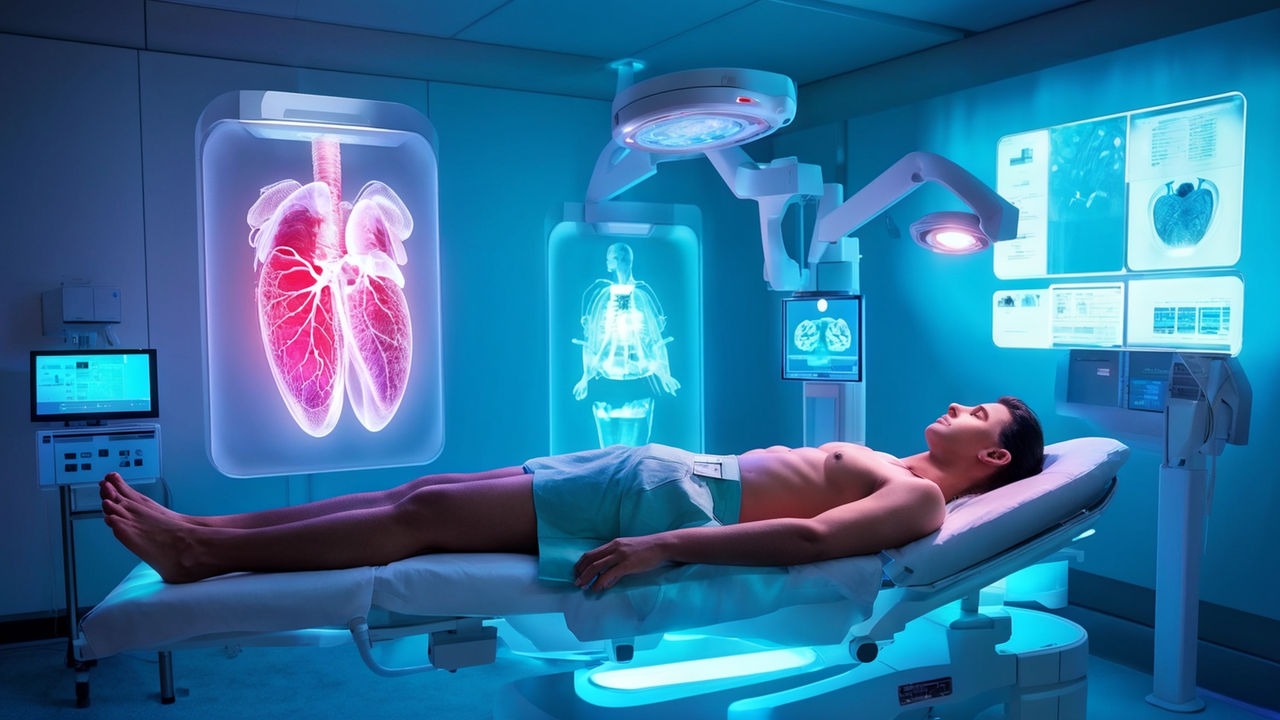Revolutionizing Healthcare: AR’s Game-Changing Role in Telemedicine and Patient Care
Augmented Reality (AR) has been making waves in various sectors, but its application in healthcare is perhaps one of the most transformative. By bridging the gap between patients and doctors, AR offers an immersive experience that enhances telemedicine, diagnosis, and patient care. With the increasing need for remote healthcare services, AR in healthcare is poised to reshape how patients and medical professionals interact. In this post, we’ll explore how AR is revolutionizing telemedicine and patient care, diving into its real-world applications, and its potential to improve patient outcomes.
AR Enhancing Telemedicine Services
The rise of telemedicine has opened new opportunities for healthcare professionals to deliver care remotely. Adding AR into the mix takes this further by creating an interactive and immersive experience for both patients and doctors. For instance, using AR headsets or mobile devices, doctors can remotely examine patients in real time, interacting with 3D models of body parts or organs. This virtual interaction enables better diagnosis, especially in fields like radiology and surgery.
Web developers creating healthcare platforms can integrate AR features to provide a more personalized and accurate experience for users. For example, Explore how Progressive Web Apps (PWAs) can enhance AR-based telemedicine platforms with faster loading times and offline capabilities.
Real-Time Diagnosis with AR
One of the biggest advantages of AR in healthcare is its ability to assist in real-time diagnosis. Doctors can use AR to superimpose diagnostic images over a patient’s body, allowing them to visualize the internal workings in real-time. This innovation has been especially valuable in fields such as orthopedics, cardiology, and even dermatology. It allows medical professionals to offer quicker, more informed diagnoses without the patient needing to be physically present.
For web developers working on telemedicine apps, real-time data processing and visualization is crucial. AR technology, combined with powerful backend services like Serverless Architecture, can make remote diagnostics faster and more efficient, even when dealing with large amounts of medical data.
AR in Surgery and Training
Another groundbreaking application of AR is in the field of surgery and medical training. Surgeons can use AR during procedures to visualize complex structures and receive real-time guidance. Similarly, medical students can practice surgeries in a virtual environment using AR, providing a safe, risk-free platform to hone their skills. This interactive learning tool is changing how future medical professionals are trained, making education more hands-on and practical.
For web developers, creating such AR-powered training tools requires a deep understanding of responsive design. You can refer to Mastering Responsive Design to ensure AR features perform seamlessly across devices, from mobile phones to AR glasses.
Transforming Patient Care with AR
Beyond telemedicine, AR is also transforming how patients manage their care at home. AR apps allow patients to receive visual instructions for complex medical devices, see 3D renderings of their treatment plans, and even simulate their medications’ effects. This not only improves patient engagement but also fosters a better understanding of their conditions, leading to improved compliance and outcomes.
Web developers focusing on healthcare solutions can consider AR integration to improve patient engagement through interactive, easy-to-understand interfaces. An example of this would be using AI to enhance personalized care through AR-powered apps, similar to AI-Driven Personalization in Healthcare Apps.
Challenges and Future of AR in Healthcare
Despite its promising potential, AR in healthcare does come with its own set of challenges. Ensuring data privacy, integrating with existing medical systems, and managing the costs of developing AR platforms are significant hurdles that need to be addressed. However, as technology evolves, these challenges are likely to be overcome, paving the way for AR to become a core component of the healthcare ecosystem.
Web developers should focus on building scalable, secure, and flexible AR healthcare platforms. Explore microservices architecture to handle the complex data processing requirements involved in AR solutions.
Discover more from Just-CO
Subscribe to get the latest posts sent to your email.




